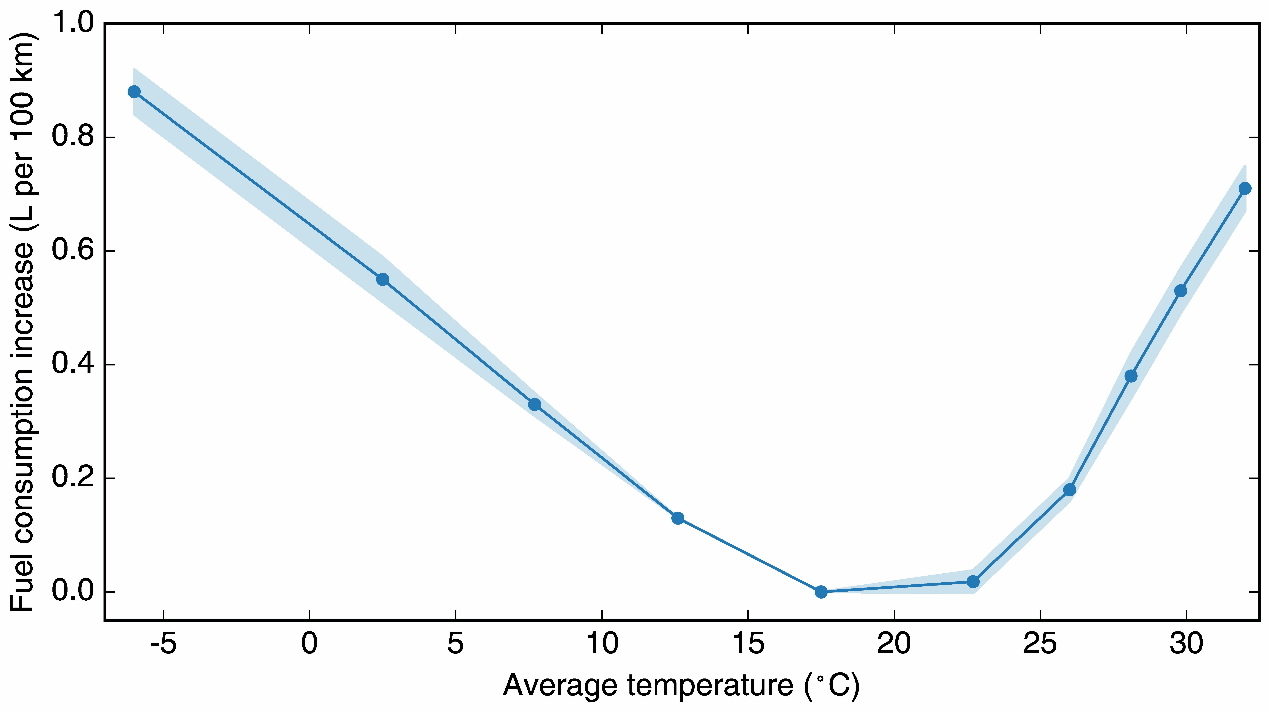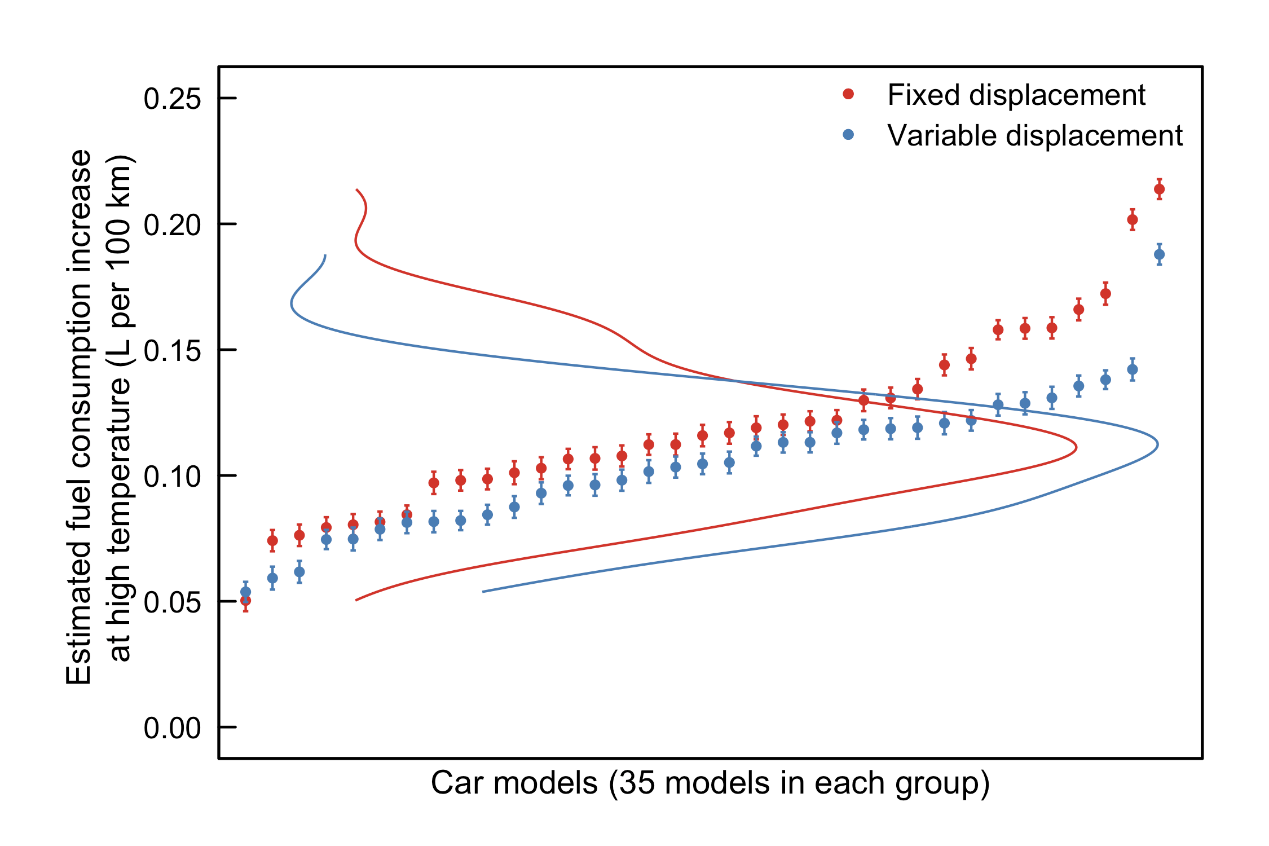SOE, Tsinghua, January 28th,2021 Recently, a collaborative research team involving Tsinghua University, including Associate Professor Zhang Da from Institute of Nuclear and New Energy Technology and Assistant Professor Zhang Shaojun from the School of Environment, and researchers from Shanghai Jiao Tong University, published an article in One Earth, a flagship journal in environmental fields of the Cell Press, titled “Switching on auxiliary devices in vehicular fuel efficiency tests can help to cut CO2emissions by millions of tons”. This paper reveals that adding energy efficiency tests of on-board auxiliary devices could have the potential to reduce greenhouse gas emissions. Based on millions of real-world fuel consumption data of light-duty passenger vehicles, the study quantitatively evaluated the impact of air conditioner (AC) in high-temperature conditions on real-world fuel consumption. The study also analyzed the benefits of reducing greenhouse gas emissions through strengthening relevant regulatory requirements and improving air conditioning efficiency.
Previous studies have shown that actual on-road energy consumption of light-duty passenger vehicles could be significantly higher than their type-approval results, with the discrepancies ranging from 20% to 40% in different regions and countries. The use of on-board auxiliary equipment, such as AC, is one of the major reasons for the increase in on-road energy consumption. However, some countries and regions, China and the EU, have not yet incorporated energy consumption of auxiliary devices into the testing protocols for fuel consumption and greenhouse gas emission regulations. Thus, automakers are not directly motivated to improve AC efficiency. This study selected over one million records of trip-level fuel efficiency, which were reported by drivers from 9 cities in China, covering 60 models of mainstream brands and different vehicle lines. Through a panel regression model, the study found that AC usage at high temperatures led to an increase of more than 0.5 liters/100 km in terms of fuel consumption, and an annual-average increase of 0.11 liters/100 km (the fuel consumption increase is 1.3% from 15°C to 20°C), resulting in more CO2 emissions from passenger cars (see Figure 1).

Figure 1 Fuel consumption variations with average temperature variations of light passenger vehicles in China (based on 15℃~20℃)
The study further identified the variations in the fuel consumption increase due to high temperatures between different models, reflecting differences in real-world energy efficiency between models and AC technologies (e.g., fixed and variable displacement compressors). For example, the average fuel consumption of Japan-originated models increased to 0.09 l/100 km, while the fuel consumption of domestic brand models increased by 0.13 l/100 km on average. The fuel consumption of AC models with fixed displacement compressors increased significantly more than that of those with variable displacement compressors (see Figure 2). With the coupled panel regression models and stochastic frontier analysis, this study indicated that with more targeted fuel economy regulations (e.g., including energy efficiency tests for vehicle ACs) or higher energy efficiency standards for on-board ACs, China could reduce CO2 emission by approximately 1.6 to 2.4 million tons per year without increasing the cost burden on vehicle users.

Figure 2 Comparison of the incremental fuel consumption in high temperatures for two types of car models with fixed displacement and variable displacement AC compressors
Zhang Da and Zhang Shaojun are corresponding authors of the paper. Zhang Da is also the first author of the paper. Professor Wu Ye, Gao Jun (undergraduate student from the class of 2016, now a Rhodes Scholar at Oxford University), Dr. Wu Xiaomeng from SOE and Professor Peng Yinghong, Professor Chen Jiangping, Associate Professor Tang Ding, and Dr. Shi Junye from Shanghai Jiao Tong University provided important assistance in data collection and discussion of the results. The research was supported by the National Natural Science Foundation of China and the National Key Research and Development Program of China, among other projects.
The link to the paper:https://www.sciencedirect.com/science/article/pii/S2590332220306564





